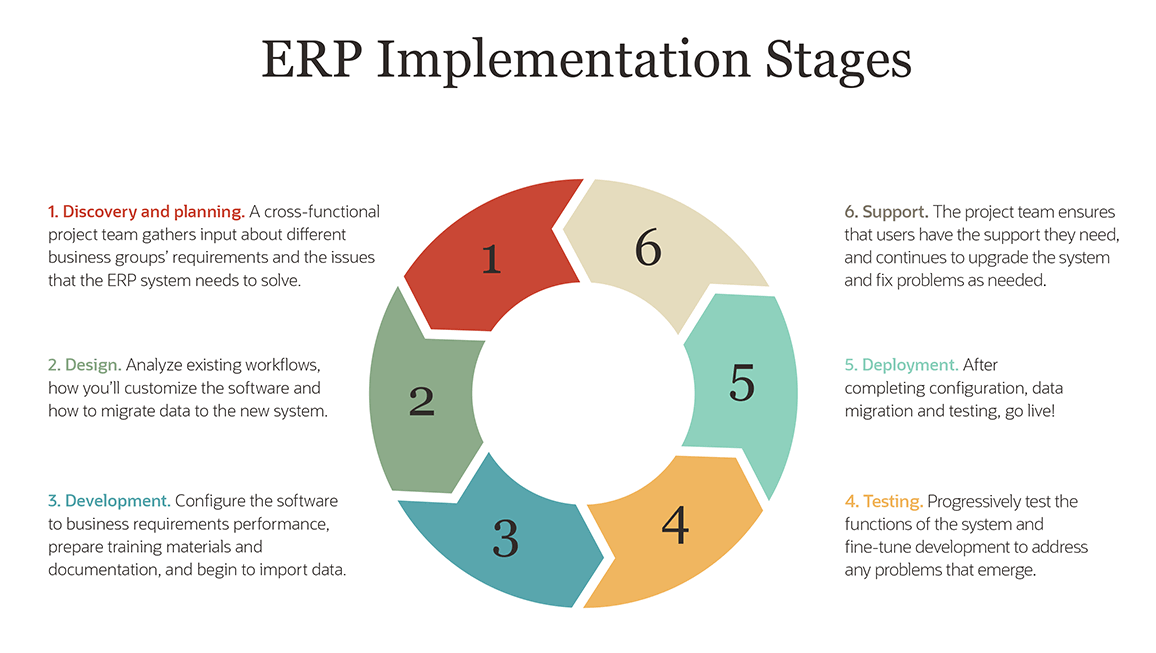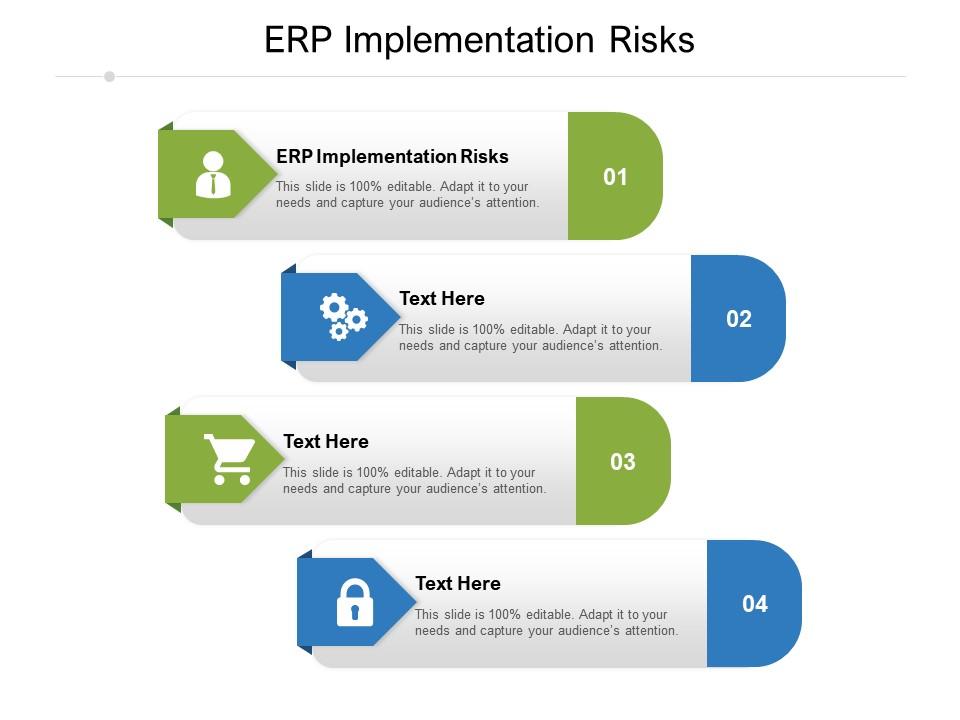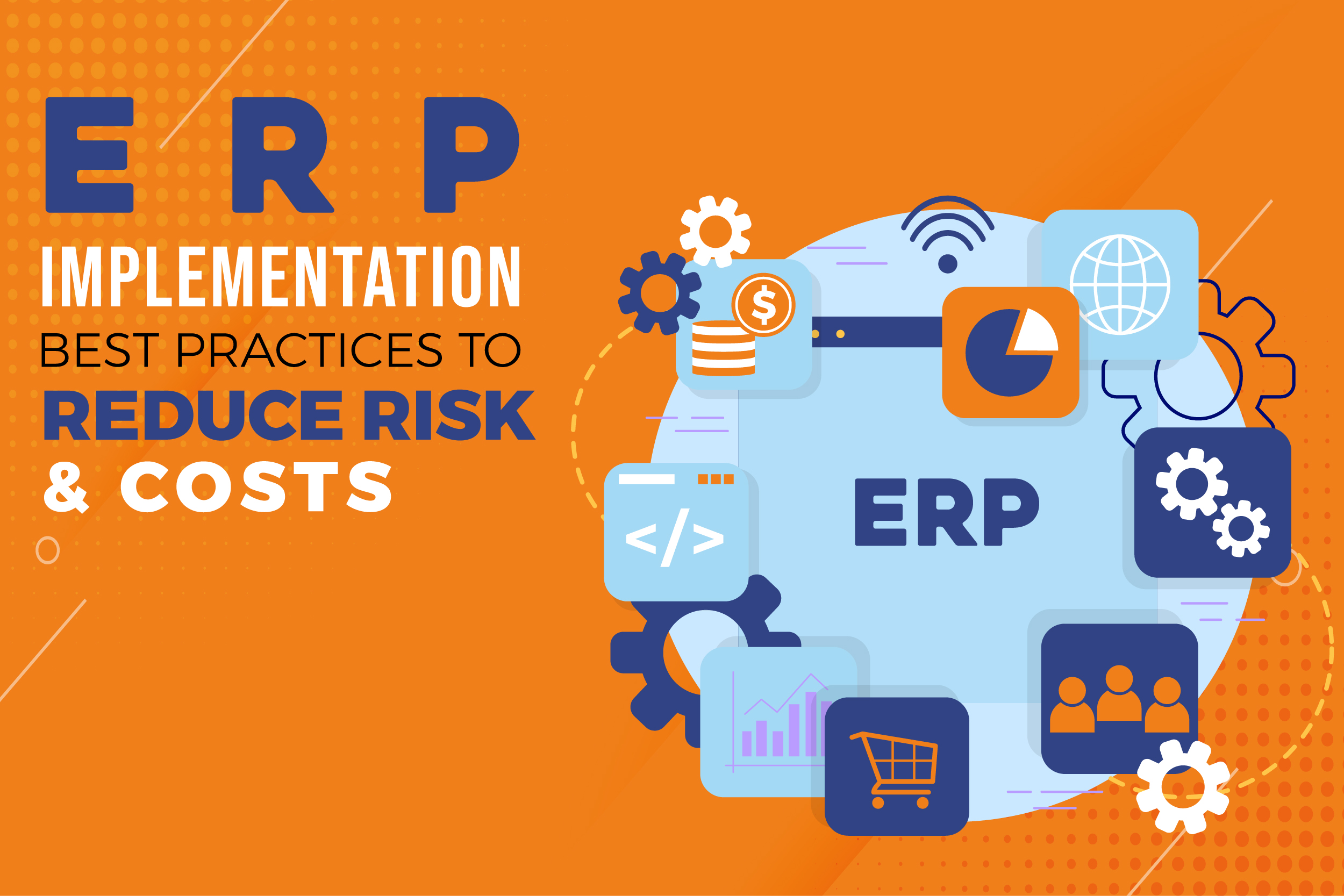ERP Implementation Risks: A Comprehensive Guide to Navigating the Challenges and Maximizing Success
Introduction
Enterprise Resource Planning (ERP) systems have become indispensable tools for modern businesses, streamlining operations, improving efficiency, and enhancing decision-making. However, ERP implementations are complex endeavors that come with inherent risks. Recognizing and mitigating these risks is crucial to ensuring a successful implementation and realizing the full benefits of an ERP system.
1. Scope Creep and Unrealistic Expectations
One of the most common ERP implementation risks is scope creep, where the project’s scope expands beyond the initial requirements. This can lead to delays, increased costs, and a system that fails to meet the organization’s needs. Unrealistic expectations can also contribute to scope creep, as stakeholders may have overly ambitious goals for the ERP system.

2. Data Integrity and Security Concerns
ERP systems centralize vast amounts of sensitive data, making them a prime target for cyberattacks. Data breaches can compromise customer information, financial records, and other confidential data. Ensuring data integrity and security is paramount, requiring robust security measures and data backup protocols.
3. Resistance to Change and User Adoption
ERP implementations often involve significant changes to business processes and workflows. Resistance to change from employees can hinder user adoption, leading to a system that is not fully utilized. Effective change management strategies are essential to overcome resistance and ensure that users embrace the new system.
4. Integration Challenges
ERP systems need to integrate with various other software applications and systems within an organization. Poor integration can lead to data inconsistencies, operational disruptions, and increased complexity. Careful planning and testing are necessary to ensure seamless integration and avoid costly setbacks.
5. Inadequate Training and Support
Proper training and support are vital for successful ERP adoption. Without adequate training, users may struggle to navigate the system and realize its full potential. Ongoing support is also crucial to address any issues or challenges that arise during and after implementation.
6. Vendor Selection and Contract Management
Selecting the right ERP vendor is critical to the success of an implementation. Organizations should thoroughly evaluate vendors based on their experience, capabilities, and industry expertise. Clear contracts that define roles, responsibilities, and timelines are essential to avoid misunderstandings and disputes.
7. Cost Overruns and Budget Management
ERP implementations can be costly, and it is essential to manage the budget carefully. Cost overruns can occur due to scope creep, delays, or unexpected expenses. Regular budget monitoring and proactive cost control measures are necessary to stay within the allocated budget.
Advantages and Disadvantages of ERP Implementation Risks
Advantages
- Improved efficiency and productivity: ERP systems automate many manual tasks, reducing errors and freeing up employees for more strategic work.
- Enhanced decision-making: ERP systems provide real-time data and insights, enabling better decision-making and improved performance.
- Increased collaboration and communication: ERP systems foster collaboration between departments by providing a centralized platform for data sharing and communication.
- Improved customer service: ERP systems provide a comprehensive view of customer interactions, enabling businesses to respond quickly to inquiries and resolve issues efficiently.
- Reduced costs: ERP systems can help businesses reduce operating costs by streamlining processes, eliminating redundancies, and improving inventory management.

Disadvantages
- High implementation costs: ERP implementations can be expensive, requiring significant investment in hardware, software, and consulting services.
- Time-consuming and complex: ERP implementations are complex projects that can take months or even years to complete.
- Potential for disruption: ERP implementations can disrupt business operations during the transition period, causing temporary inefficiencies or downtime.
- Data security risks: ERP systems centralize large amounts of sensitive data, making them a potential target for cyberattacks and data breaches.
- Resistance to change: Employees may resist changes to their workflows and processes, hindering user adoption and system utilization.

Summary of ERP Implementation Risks
ERP implementation risks can significantly impact the success of an implementation project. These risks include:
- Scope creep and unrealistic expectations
- Data integrity and security concerns
- Resistance to change and user adoption
- Integration challenges
- Inadequate training and support
- Vendor selection and contract management
- Cost overruns and budget management
By recognizing these risks and implementing effective mitigation strategies, organizations can increase the likelihood of a successful ERP implementation and maximize the benefits of these powerful systems.
Q&A on ERP Implementation Risks
1. What are the most common ERP implementation risks?
Answer: Scope creep, data security concerns, resistance to change, integration challenges, and inadequate training.
2. How can I mitigate the risk of scope creep?
Answer: Define clear project scope, involve stakeholders in planning, and regularly review and adjust the scope as needed.
3. What steps can I take to ensure data integrity and security?
Answer: Implement robust security measures, establish data backup protocols, and train users on data handling best practices.
4. How do I overcome resistance to change during an ERP implementation?
Answer: Engage employees early on, communicate the benefits of the new system, provide adequate training, and address concerns promptly.
5. What are the key considerations for vendor selection?
Answer: Experience, capabilities, industry expertise, and contract terms that clearly define roles, responsibilities, and timelines.
6. How can I manage costs effectively during an ERP implementation?
Answer: Establish a realistic budget, monitor costs regularly, and implement cost control measures to avoid overruns.
7. What is the role of training and support in ERP implementation?
Answer: Proper training ensures user adoption, while ongoing support helps address issues and maximize system utilization.
8. What are the advantages of ERP implementation?
Answer: Improved efficiency, enhanced decision-making, increased collaboration, improved customer service, and reduced costs.
9. What are the disadvantages of ERP implementation?
Answer: High implementation costs, time-consuming and complex nature, potential for disruption, data security risks, and resistance to change.
10. How can I measure the success of an ERP implementation?
Answer: Track key metrics such as cost savings, productivity gains, user adoption, and customer satisfaction.
11. What are the best practices for ERP implementation?
Answer: Involve stakeholders, define clear scope, ensure data integrity, manage change effectively, and provide adequate training and support.
12. How can I avoid common ERP implementation pitfalls?
Answer: Recognize risks, plan carefully, manage scope and budget effectively, and engage employees throughout the process.
13. What are the emerging trends in ERP implementation?
Answer: Cloud-based ERP, mobile accessibility, artificial intelligence, and predictive analytics.
Conclusion
ERP implementation risks are an inherent part of these complex projects. However, by understanding these risks and implementing effective mitigation strategies, organizations can significantly increase the likelihood of a successful implementation.
Closing Statement
ERP systems offer immense potential to transform business operations and drive growth. By addressing the risks associated with ERP implementation, organizations can unlock the full benefits of these powerful systems and gain a competitive edge in today’s dynamic business environment.
